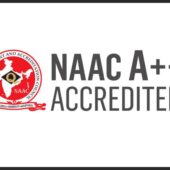Qualitative metrics are one of the important components of the Self Study Report (SSR), primarily based on which the NAAC’s grading is determined.
They are especially to elicit qualitative responses as a standard of measurement from higher education institutions. In easy terms, Metrics are equal to Questions. Since the metrics require descriptive responses, they may be named Qualitative metrics (QiM).
According to the Revised Format of Self-Study Report, 39 QlM questions cover all seven standards of NAAC such as Curriculum aspects, Teaching-Learning and Evaluation, Research, Innovations, and Extension, Infrastructure and Learning Resources, Student Support, and Progression, Governance, Leadership, and finally Management, and Institutional Values and Best Practices.
All of that is related to the subjective quality of matters regarding the institute, phenomenon, expertise, leadership, reputation, etc.
Importance of Qualitative Metrics
As far as SSR is concerned, they make a contribution to 38 of 136 metrics in the case of Universities, 38 of 137 in the case of Autonomous colleges, and 41 of 121 for the Affiliated colleges.
Qualitative Metrics (QiM) is critical in NAAC Accreditation and they add up to 30% of the whole 1000 score of NAAC.
The input from the Qualitative metrics using on-site peer judgment adds to the HEI’s final NAAC grading. The attention is more on this 30% intangible factor of the metrics, therefore they’re a very critical factor in NAAC grading.
10 Tips to prepare Qualitative Metrics Report
- Allocate a team that is dedicated and skilled enough to perform this challenge. The team needs to be immediately reported to the Accreditation Committee of the college/institute in case of any queries.
- A little bit of a probe or self-evaluation is a must. Try to examine more about your college, its curricular elements, teaching-learning and evaluation, research, innovations, infrastructure, resources, student support, governance, policies, etc.
- The topmost task before starting to write the QlM is to study each metric carefully, highlighting the keywords. A centred response is all that is required using the proper set of keywords. Remember to cover all elements of the metric in your answer.
- You are explaining what has already been carried out in your institution. So DO NOT deliver your responses in its ‘Present tense’.
- While writing QlM, do not forget to include the advantages gathered during the event and validate them with essential proof.
- Do not flaunt. Give the best applicable, clear, and sincere answers that you should be able to demonstrate with confidence to the visiting Peer Team.
- Convey your thoughts in simple English and without grammatical mistakes. Try to include relevant headings and subheadings for your solutions.
- See that your solutions do not fall short of the length mentioned. By writing too short, you may deliver an impression to the peer team that you possibly didn’t have plenty to mention and lack expertise. Similarly, nowhere attempt to squeeze in the extra matter! Lengthy tables, graphs won’t look suitable in the restrained space provided. If you’ve got extra topics of numbers and names to mention, do it, however never overdo it. Take the additional features to the Annexure and attach them.
- Do justice to the metrics that require supporting files as uploads. Invariably, you’re only proving to the Peer team that you have an exceptional practice carried out effectively. You have the choice to either upload the proof in the MB provided in the portal, or offer an external hyperlink to your institution’s website.
- Do not beat around the bush. Focus on what matters. This way, you’ll start powerfully, and end with an impactful statement. When finished, evidence the copy. Get this done by an expert copywriter or use a versatile team member who has a suitable writing ability. Remember your copy can be checked for plagiarism. Do not copy content material from any online source. Finally, share a copy with the IQAC to see if all metric is answered, and nowhere it’s far overdone.


